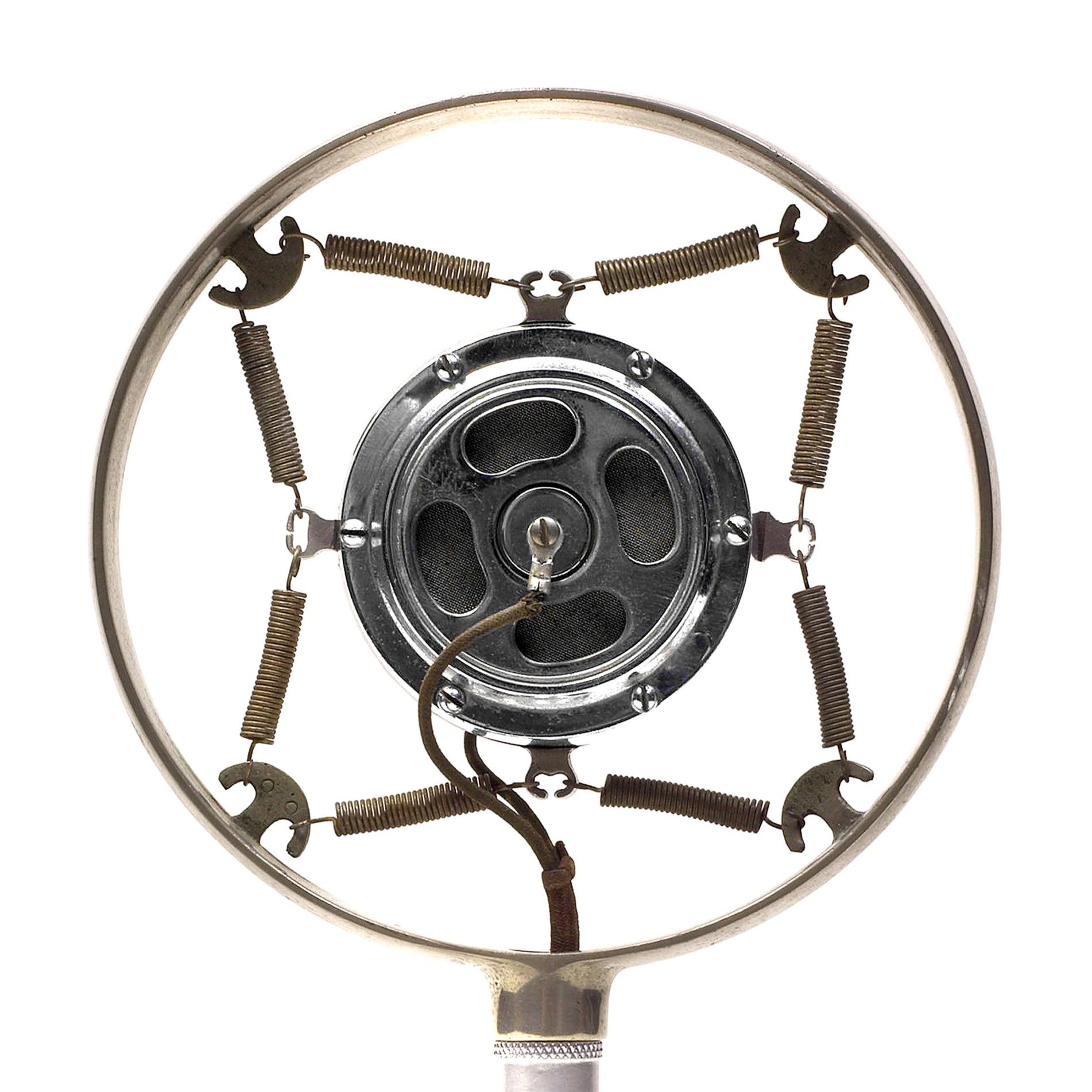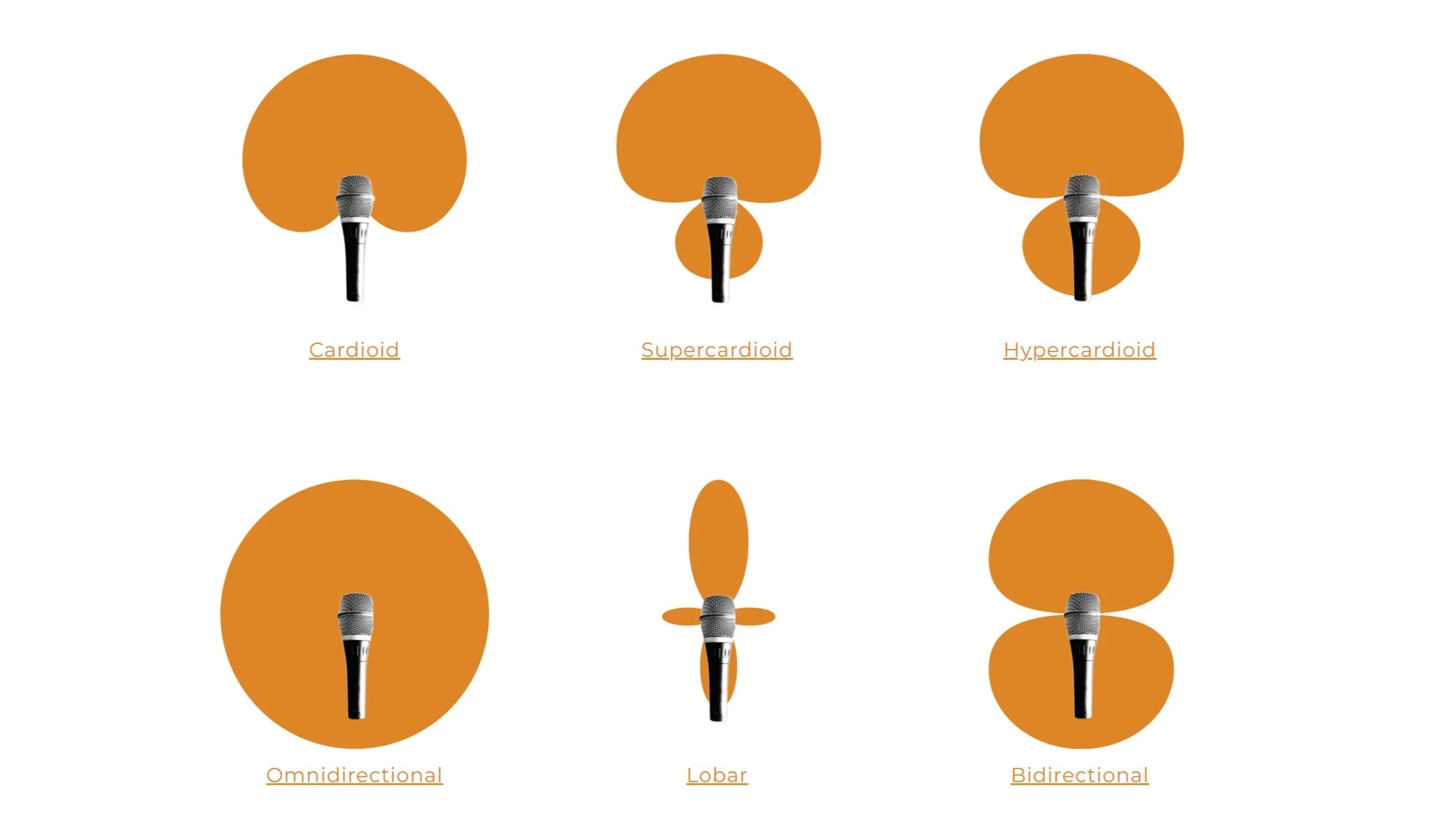There are many types of mics to choose from, but do you know the differences? Does it matter? Should you just pick the one that looks the coolest? No don’t do that!
Instead let’s look at the 2 main types of microphones you WILL come across while you’re producing content, and figure out which type best suites your needs: Dynamic and Condenser.
Content
Microphone basics
All microphones capture sound by detecting vibrations from the sound waves hitting its Diaphragm, which is a thin plastic or metal film that vibrates in response to soundwaves.
As the diaphragm vibrates, the vibrations are turned into electrical signals within the Mic’s Capsule, the part of the microphone that turns sound into electrical signals. These signals are sent to the recorder or DAW.
While both Dynamic and Condenser mics have capsules with vibrating diaphragms, the way they work couldn’t be more different. Let’s go over the pros and cons of each!
Dynamic Microphones
image from Shure
Dynamic microphones are simpler and more durable than condenser mics, with capsules made up of a diaphragm, voice coil, and magnet. When soundwaves hit and vibrate the diaphragm, the attached voice coil also vibrates, producing an electrical signal in the magnetic field generated from the magnet, and sending it to your recorder.
PROS
Dynamic mics are much less sensitive than condenser mics and are great for recording loud sources like singing and instruments while blocking background noises. They produce that warm “broadcast” sound people associate with podcasts and radio, making dynamic mics a very popular choices for content creators. Dynamic mics also don't require batteries or external power, getting all the power they need from the magnetic field in the capsule.
CONS
The low sensitivity of Dynamic microphones makes them very Gain Hungry, which means the mic need extra amplification or “gain” from the recorder or DAW to increase the amplitude of the audio signal. This can be a problem since excessive gain can produce noise in the signal and distortion, depending on the quality of your preamps. You may need extra equipment to get clean audio.
Dynamic mics also have a lower frequency response than condenser mics, meaning they capture a narrower range of frequencies from the original sound source.
Condenser Microphones:
image from Shure
Condenser mics, on the flip side, are much more complex and not as indestructible as dynamic mics. They have capsules made up of a metal (or metal coated) diaphragm and an electrically charged metal (or also metal coated) backplate.
When soundwaves hit the diaphragm and make it vibrate, the distance between the diaphragm and backplate changes, creating the electrical signal that goes to your recorder.
Unlike dynamic mics, condensers don’t generate their own power and need a way to maintain the electrical charge while also powering the additional circuitry built into them.
PROS
Condenser mics offer a much higher sensitivity and frequency response, letting you record more “natural” and precise audio than you can with dynamic mics. The added electronics within condenser mics also allow them to come in all shapes and sizes, from tiny lav mics to large diaphragm ones and most USB mics.
CONS
While that’s great, the extra sensitivity provided by condenser mics makes them hard to use in untreated or loud environments, so be mindful of that when using them. They also produce their own noise due to the voltage going through them.
DYNAMIC AND CONDENSER RECAP
USB Microphones
Available in both dynamic and condenser models, USB microphones are super convenient and can simplify your recording workflow down to a single cable and computer by converting the analog signals into digital ones right inside the mic.
Higher end USB mics can get the job done great if that’s what you’re working with, BUT you do have to be mindful of a few things first.
Some USB mics, especially older ones, come with limited Sample Rates and Bit Depth options which can really limit the type of recordings you can do, so it’s best to do your research on the mic before buying one, as well as make sure your computer and recording software can handle any higher end options.
Polar Patterns
Another thing to keep in mind when choosing your microphone is its Polar Pattern, or the directional sensitivity of the mic. Looking at a mic’s polar pattern will tell you which side is meant to capture sounds and which is meant to reject them.
Types of Polar Patterns:
Omnidirectional:(Omnis): Pick up sound all around them.
Bidirectional: Back and front of the mic.
Cardioid: All purpose pattern – capture sounds directly in front of them while minimizing sounds coming from the sides or from behind them.
Super-cardioid and Hyper-cardioid: tighten the angle of capture and reject even more sounds not directly in front of the mic. Shotgun mics are a great example of mics with these polar patterns, and their tightened directionality also makes them ideal for capturing sources at a distance.
image from SoundRef
Conclusion
It is absolutely crucial to keep your audio needs in mind when choosing a microphone. You wouldn’t want to use a low sensitivity dynamic cardioid mic to capture a single sound at a distance - you’d want a shotgun mic for that - or an omnidirectional mic to record a podcast in a loud or untreated environment.
As always, let me know if you found this helpful, hated everything about it, or have any feedback. I'm always happy to chat!
-A
Links and Resources:






